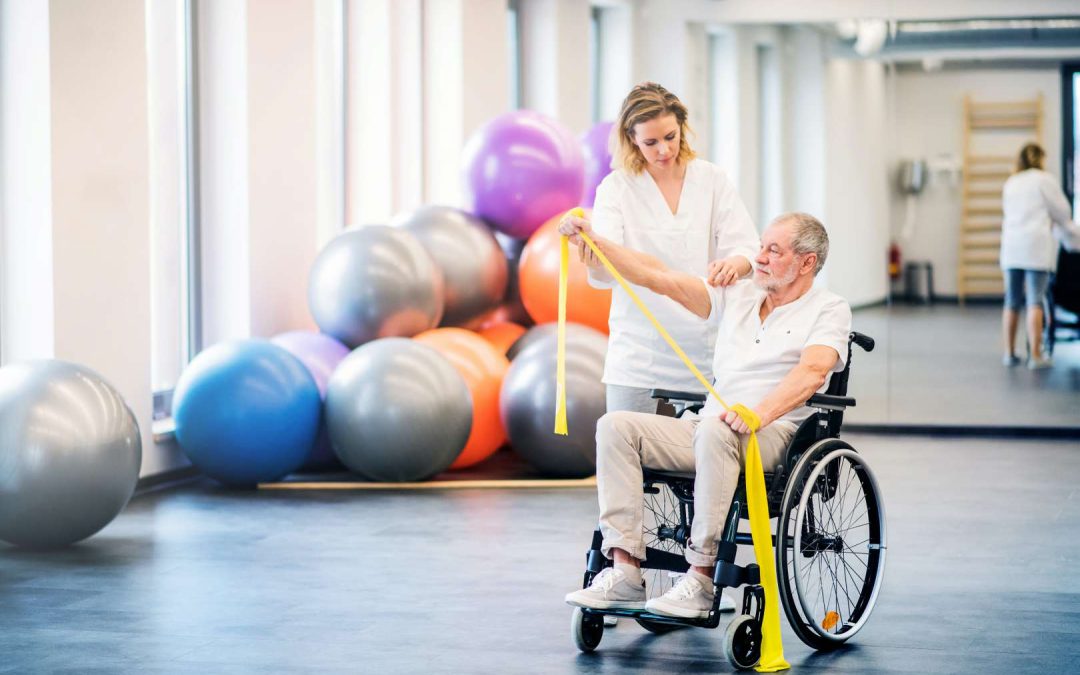The Vital Importance of Physical Activity in Senior Care
As we age, maintaining physical health becomes increasingly important. Exercise is a cornerstone of well-being for seniors, contributing not only to physical health but also to mental and emotional well-being. In senior care, regular physical activity plays a crucial role in preserving mobility, independence, and quality of life.
Incorporating exercise into daily routines can help seniors manage chronic conditions, improve balance, and reduce the risk of falls. With the right guidance and support, seniors can remain active, engaged, and healthy well into their golden years. Exercise isn’t just about extending life; it’s about enhancing the quality of life, allowing seniors to continue enjoying the activities they love.
Understanding the Unique Exercise Needs of Seniors
Exercise for seniors is not a one-size-fits-all approach. The physical capabilities and health conditions of older adults vary widely, making it essential to tailor exercise programs to individual needs. Low-impact activities such as walking, swimming, and yoga are particularly beneficial for seniors, as they provide gentle yet effective ways to stay active without straining joints or muscles.
Strength training, flexibility exercises, and balance activities are also crucial components of a well-rounded fitness plan for seniors. These exercises help maintain muscle mass, improve joint flexibility, and enhance stability, all of which are vital for preventing falls and promoting independence. Consulting with healthcare providers and fitness professionals ensures that seniors engage in safe and effective exercises suited to their specific needs.
Promoting Mobility Through Regular Exercise
Mobility is a key factor in maintaining independence as we age. Regular exercise helps seniors stay mobile by strengthening muscles, improving joint flexibility, and enhancing cardiovascular health. Activities such as walking, cycling, and tai chi are excellent for promoting mobility, as they encourage movement while being gentle on the body.
In addition to traditional exercises, incorporating functional fitness activities that mimic daily tasks can further enhance mobility. For example, practicing standing up from a seated position or stepping sideways can help seniors maintain the ability to perform these actions with ease in their everyday lives. Maintaining mobility through exercise not only supports independence but also boosts confidence and quality of life.
Enhancing Mental Health and Cognitive Function
Exercise is not only beneficial for the body but also for the mind. Engaging in regular physical activity has been shown to improve mood, reduce anxiety, and enhance cognitive function in seniors. The release of endorphins during exercise contributes to a sense of well-being and can help combat feelings of depression and loneliness, which are common among older adults.
Moreover, certain types of exercise, such as dance and tai chi, involve coordination, rhythm, and memory, providing cognitive challenges that help keep the brain sharp. These activities stimulate mental engagement while also offering social interaction opportunities, further enhancing emotional well-being. By promoting both physical and mental health, exercise becomes a powerful tool in comprehensive senior care.
Social Benefits of Group Exercise Programs
Group exercise programs offer seniors the chance to stay active while also fostering social connections. Participating in classes such as water aerobics, yoga, or walking groups provides a sense of community and camaraderie. Social interaction is a crucial aspect of senior health, as it reduces feelings of isolation and loneliness.
These group settings also provide motivation and accountability, encouraging seniors to stick with their exercise routines. The shared experience of working toward common health goals can lead to lasting friendships and a greater sense of belonging. In senior care, the social benefits of group exercise are just as important as the physical ones.
Overcoming Barriers to Exercise in Senior Care
Despite the numerous benefits of exercise, seniors may face several barriers to staying active. Physical limitations, chronic pain, and fear of injury can make it challenging for older adults to engage in regular physical activity. However, these obstacles can often be overcome with the right strategies and support.
Adaptive exercises, assistive devices, and modified routines can make exercise accessible to seniors with various physical limitations. Encouraging a gradual approach, starting with short, simple activities and gradually increasing intensity, can help build confidence and reduce the risk of injury. Caregivers and family members play a critical role in providing the encouragement and assistance needed to help seniors overcome these barriers and enjoy the benefits of regular exercise.
Creating a Sustainable Exercise Routine for Seniors
Developing a sustainable exercise routine is essential for long-term success in senior care. Consistency is key, and finding activities that seniors enjoy increases the likelihood of maintaining an active lifestyle. Whether it’s walking in a local park, participating in a dance class, or practicing yoga, the best exercise routine is one that is both enjoyable and sustainable.
Caregivers and fitness professionals can help seniors set realistic goals and create a structured plan that includes a mix of aerobic, strength, and flexibility exercises. Regularly reviewing and adjusting the routine as needed ensures that it remains effective and engaging. By making exercise a regular part of daily life, seniors can continue to reap the physical, mental, and social benefits for years to come.
Conclusion: Embracing an Active Lifestyle in Senior Care
Exercise is a fundamental aspect of senior care, contributing to physical health, mental well-being, and overall quality of life. By promoting regular physical activity tailored to individual needs, caregivers can help seniors maintain their independence, mobility, and happiness as they age. An active lifestyle is not just about living longer; it’s about living better, ensuring that the golden years are truly golden.
With the right support, encouragement, and resources, seniors can embrace an active lifestyle that enhances their health and well-being. Whether through group classes, personalized fitness plans, or simple daily activities, exercise plays an essential role in promoting a fulfilling and vibrant life for older adults.



Recent Comments